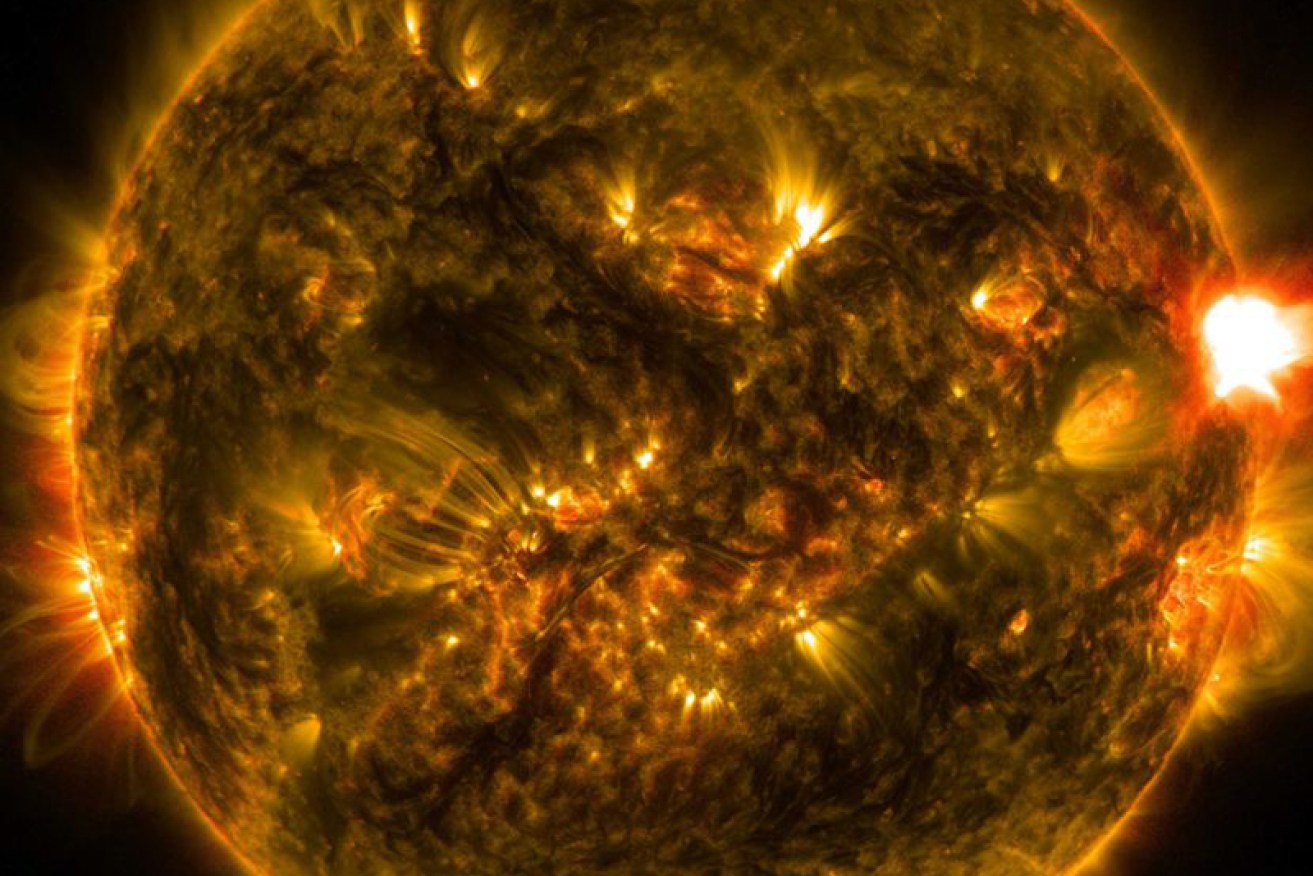Solar flares used to predict space weather events

Astronomers have seen for the first time how solar flares act as powerful accelerators flinging radiation and particles deep into space at close to the speed of light in a matter of seconds.
The new observations, reported in the journal Science, will help scientists predict space weather events that can cause power blackouts, disrupt communications systems, and damage spacecraft.
“Solar flares are very enigmatic things, they are able to produce huge amounts of energy and accelerate particles in a remarkably short time,” study author Professor Dale Gary of New Jersey Institute said.
• VIDEO: Massive star annihilated by black hole
• Polish up your CV … NASA is hiring new astronauts
• Mars to get planetary ring set to rival Saturn
“If we understand how solar flares work, we have a better opportunity to understand a little bit more about how they’re formed, and can look for signatures that allow us to understand whether a flare’s going to produce a big particle event.”
Solar flares — the most powerful explosions in the solar system — are generated by a sudden release of energy as magnetic field lines in the Sun’s atmosphere snap and reconfigure through a process called magnetic reconnection.
The authors used the new enhanced capabilities of the Very Large Array (VLA) Radio Telescope in New Mexico to study a solar flare that erupted on March 3, 2012 in unprecedented detail, producing over 40,000 individual images per second across a broad range of radio frequencies.
When combined with ultraviolet and X-ray observations from other telescopes, the researchers found the particles were being accelerated in a region of the solar flare called the termination shock, where fast-flowing plasma crashes into dense stationary magnetic loops creating the shock.
Electrons are repeatedly pummelled by the shock into higher and higher energies.
“These particles can cross the shock multiple times gaining more energy each time and quickly ramping up,” Professor Gary said.
“Once they get fast enough they can escape the shock region and if nothing prevents them, escape into space.”
Another of the study’s authors Dr Bin Chen from Harvard-Smithsonian Centre for Astrophysics said this scenario had been suspected for some time and was part of the standard model for solar flare production, but lacked convincing evidence until now.
“We see the radio emissions from electrons accelerated at the shock and were able map the structure of the shock,” he said.
“When the shock is missing there are less radio and X-ray emissions coming from electrons, so if the shock is present there are more electrons, which is evidence that the shock is accelerating the electrons.”
– ABC








